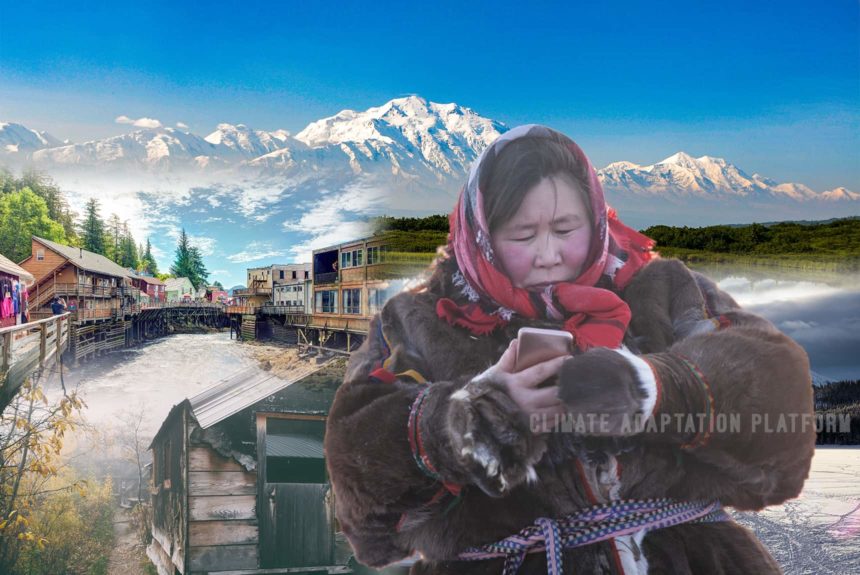Mountain Village, Alaska, which accommodates 855 residents, are sinking due to thawing permafrost. Ninety per cent of people living in Yupik village are Native Americans.
They lived in these 1970s homes, which were brought to the village during the trans-Alaska oil pipeline boom, making the country a petroleum state.
The problem with these houses is that they were designed for warmer temperatures and not for Alaska’s subarctic climate. They are improperly insulated, burdening families with very high heating bills, and are prone to moulds that have made respiratory illness endemic in Alaska, especially among indigenous children.
The permafrost consists of layers of frozen organic materials covering 80% of Alaska that are rapidly melting, speeding up the destruction of any structure built on it, including pipelines.
In Alaska, 80% of the land is permafrost, or layers of organic materials. Decades of permafrost thawing have eroded the land and destroyed houses and structures built on it, cracking windows, splitting floors, and making these houses impossible to live in, especially during sub-zero temperatures.
These houses are also crowded with families. Two or four families usually live under the same roof.
These families would do anything to make these dilapidated houses liveable, supporting their foundations or covering the cracks with any available materials—ATV drums, concrete slabs, wood cribbing, etc.
But it’s not only the residents of Mountain Village who are dealing with the dangers of permafrost melts.
Thirty villages face the decision of whether to stay or relocate as Alaska’s permafrost, coastlines, and sea ice are receding.
In 2019, the Cold Climate Housing Research Centre (CCHRC) assisted in relocating Newtok, a Yupik village of 400 people in southwest Alaska.
The Cold Climate Housing Research Centre (CCHRC), a part of the National Renewable Energy Laboratory (NREL), also designs house prototypes. The centre is a pioneering, sustainable, and climate-resilient circumpolar architecture that could withstand the increasing effects of climate change and protect residents against the harsh Alaskan climate.
Aaron Cook, who leads the Sustainable Northern Communities Program at the CCHRC/NREL, says, “If we cannot predict what the climate is going to do, then all of our architecture should be adapted”.
According to the CCHRS website, they are working throughout the traditional territories of the Indigenous peoples of Alaska, respecting the First Alaskans for their ancestral and present land stewardship and place-based knowledge.
These houses are designed and constructed using indigenous wisdom and 21st-century technologies. These house designs are climate-resilient and sustainable, fitting the Alaskan and the people’s culture.
Seattle Times describes the CCHRS houses as:
“For the freezing winters, the house has an insulation-ventilation system that keeps heat in, moisture and dirty air out, and generally uses 70% to 80% less fuel than average homes. The adjustable foundation, normally used for temporary bridges, can shift up to 9 inches with the vulnerable permafrost underneath Mountain Village. Should the permafrost deteriorate beyond habitation, strong beams can be hooked up to a truck to move the house.”
CCHRS also adapted the design of these houses to match Mountain Village residents’ financial reality. The research centre’s engineers designed small prototypes for low-income families.
According to the article, some politicians who champion climate adaptation and rural native communities also support the expansion of oil drilling.
The report highlights the importance of aligning climate policy with climate adaptation to make CCHR’s work more meaningful and effective.
To know more about the challenges of Mountain Village residents and what CCHRS is doing to help them, read the entire article:
Housing in Alaska can’t survive climate change. This group is trying a new model.
And to know more about what the CCHRS is doing and its projects, check out their website:
Cold Climate Housing Research Center
Sources:
Quackenbush, C. (2021, September 26). Housing in Alaska can’t survive climate change. This group is trying a new model. The Seattle Times. Retrieved from https://www.seattletimes.com/nation-world/housing-in-alaska-cant-survive-climate-change-this-group-is-trying-a-new-model/
Cold Climate Housing Research Center. Retrieved from https://cchrc.org/
Ilhardt, J. (2021, June 8). ‘It was sad having to leave’: Climate crisis splits Alaskan town in half. The Guardian. Retrieved from https://www.theguardian.com/environment/2021/jun/08/it-was-sad-having-to-leave-climate-crisis-splits-alaskan-town-in-half



Leave a Reply